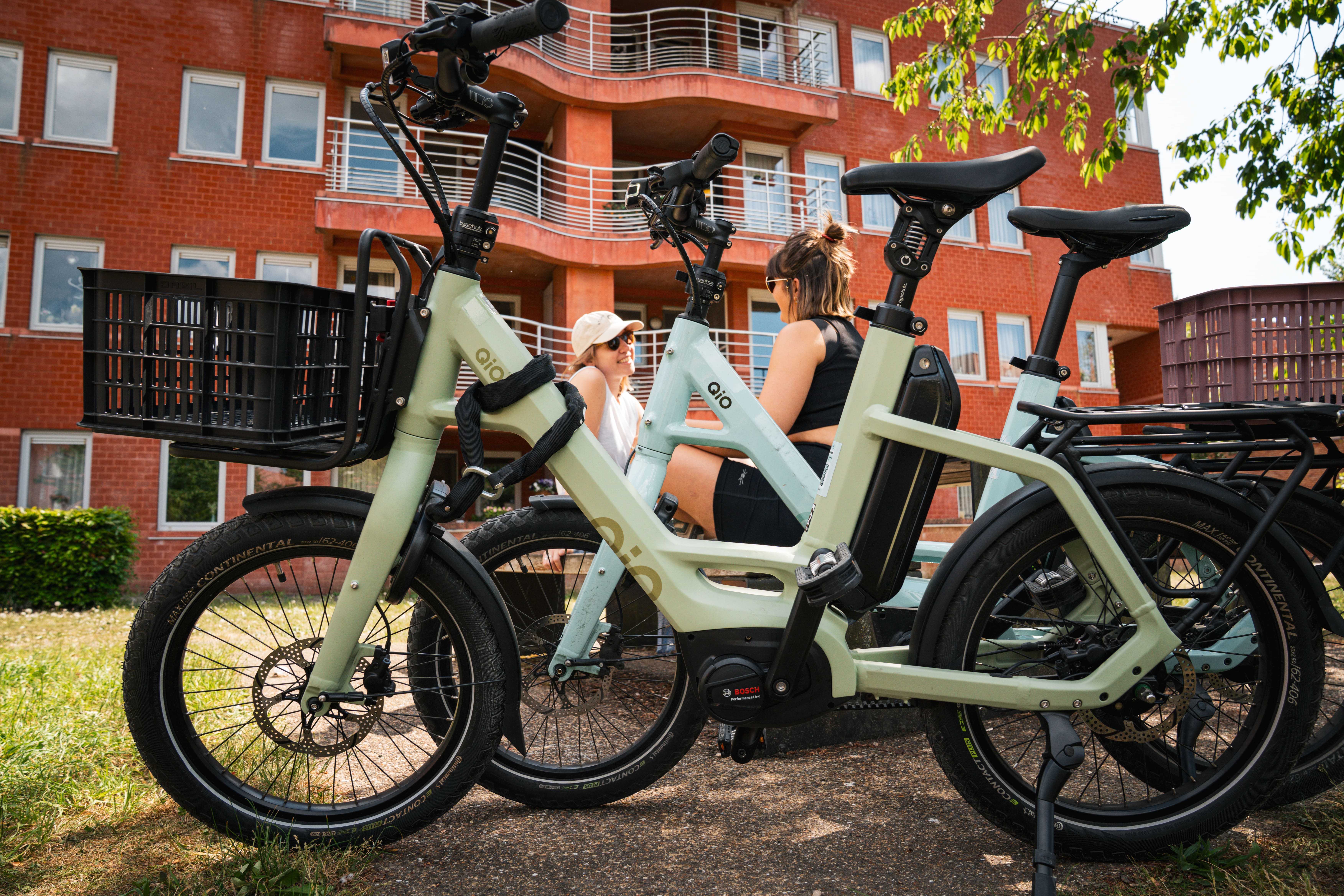Offering a bike lease to your employees is one of the smartest moves you can make today. It’s tax-efficient, administratively simple, and a strong asset for your employer brand. You also invest directly in healthier, happier, more motivated people. In this article, you’ll learn how employer bike leasing works, what it costs, and why more and more companies are making the switch.
What is employer bike leasing?
Employer bike leasing means your employees can choose a bike through a leasing plan—think e-bike, speed pedelec, or even a cargo bike. As the employer, you typically set the lease term: 12, 24, 36, or 48 months. The bike is usually paid via salary exchange or a cafeteria plan, keeping it financially attractive for both employer and employee.
For you as the employer, the process is straightforward:
- You sign a leasing agreement with Joule.
- Employees select their bike at a local dealer or via our mobile service.
- Essentials like insurance and maintenance are included.
- You keep oversight and control in our client portal, the Joule Hub.
Costs and financial impact for employers
A key reason bike leasing is so popular: the math makes sense. For companies in Belgium, lease costs are 100% tax-deductible and exempt from social security contributions (RSZ). That often makes bike leasing effectively budget-neutral, for example via salary exchange, a cafeteria plan, or a mobility budget.
VAT in Belgium isn’t recoverable, but that doesn’t create extra burden—it’s bundled into the lease package. For many employers, that means little to no additional cost, while employees enjoy a bike they can use privately and for commuting. Bonus: bike leasing is also very attractive for employees—see our explainer here.
👉🏻 Want a full financial overview? Read our guide: “Bike leasing benefit must now be reported on the tax form.”
Calculate what your employee can save
With our calculator, you can see in seconds what bike leasing means net for your employee and which budget-neutral options are feasible (salary exchange, cafeteria plan, mobility budget). It’s a quick way to strengthen your business case and internal messaging.

Leasing as a powerful HR tool
Bike leasing isn’t just a financial win—it’s a strong HR instrument. Employees who cycle regularly feel fitter, experience less stress, and are less likely to be off sick. A lease bike directly supports vitality and productivity at work.
It’s also a compelling benefit that makes your total rewards stand out. In a tight labor market, that can be the difference in attracting and retaining talent. Finally, a bike policy signals that your organization values sustainability and wellbeing—strengthening your employer brand and boosting your reputation.
HR and wellbeing at work
A lease bike is more than transport. It’s an HR lever that supports:
- Wellbeing & health: Regular cyclists feel fitter, have less stress, and are off sick less often—boosting vitality and productivity.
- Employer branding: A lease bike makes your package more attractive in the war for talent.
- Sustainable image: A bike policy shows you prioritize sustainability and wellbeing—great for your brand and public image.
What the process looks like for employers
Getting started doesn’t have to be a heavy lift. Together with Joule, you move through three clear steps:
- Design your plan – Create a clear bike policy (download our free bike policy template).
- Activate – We run info sessions, test days, and communications to get people on board.
- Manage & track – Use the Joule Hub to manage quotes, contracts, invoices, and your active fleet.

Digital tools and service for hassle-free fleet management
Joule offers flexible service options. Prefer to work with local partners? Choose Joule Local so employees select and service their bike at a trusted dealer. Want everything handled at home? Joule Mobile provides delivery, maintenance, and repairs at the employee’s doorstep.
For HR, there’s the Joule Hub, your digital home for admin and fleet management. Need integrations with your payroll provider or extra support? Our HR team is ready to help.
Everything included: insurance, maintenance, roadside assistance, theft coverage
A lease package is deliberately comprehensive: all-risk theft and damage cover (omnium) comes standard, as does 24/7 roadside assistance. Maintenance and repairs are included per your chosen service level. Employees ride worry-free while you keep the practical side tight—without surprise costs or scheduling headaches.
Real-world examples
Plenty of organizations are already convinced. Explore their stories:
- GO! Scholengroep: more than 1,000 staff on bikes, combining sustainability with strong HR.
- Helan
- Krëfel
- VNZ
- Ter Heide
And that’s just a sample. Others who already ride with Joule include Telenet, Novartis, PepsiCo, GO! Scholengroep, D’Ieteren Mobility Company, UCM, UCB, P&G, Mainfreight…

How to take the first step
Bike leasing through the employer is a smart investment in finance, HR, and sustainability. You make your organization more attractive, strengthen your employer brand, and give employees a nudge toward healthier mobility.
Have questions? Check the FAQ below, or read “7 FAQs about bike leasing for HR managers.”
Curious how we’ll tailor bike leasing to your organization? Let’s talk!
Jouw vragen,
onze antwoorden
What is bike leasing through your employer and how does it work in Belgium?
Bike leasing is a formula where the employer provides a bike for the employee. It can be budget-neutral via salary exchange or a mobility budget. Employees get a bike including insurance, maintenance, and roadside assistance, while you as an employer benefit from tax advantages and administrative support.
What are the leasing costs for the employer?
Bike leasing is 100% tax-deductible and exempt from social security contributions. VAT is not recoverable, but it doesn’t create an extra cost since it’s included in the package.
As an employer, you are completely free to determine what portion of the cost of the bike lease you will contribute:
- Full or partial payment: the employer pays (part of) the amount for the bicycle lease.
- Cost-neutral for the employer: the bicycle lease is passed on to the employee through a deduction from net pay or through salary.
What happens to the employees' wage?
With salary exchange, the employee trades part of their gross salary for a bike. This lowers the taxable base, but the net cost remains low thanks to tax advantages and the bike allowance. The benefit of bicycle leasing depends on a few factors, including the tax rate. This depends, among other things, on the employee's marital status, the number of dependent children, etc. For a correct calculation of the net cost of bicycle leasing, it is best to consult a social secretariat. For a rough estimate, you can always consult our calculator.
What if you already have a cafeteria plan or mobility budget?
Bike leasing can be seamlessly integrated into existing plans. Employees simply choose to allocate part of their budget to a bike.
What happens when the employee leaves the company and terminates the leasing?
There are three options if the employee leaves the company during the term of the lease:
- the employee purchases the bicycle for its market value at the time;
- the employee returns the bicycle upon payment of an administrative fee;
- the employee passes the bicycle to a colleague.
However, the employer is free to limit or expand these options.


